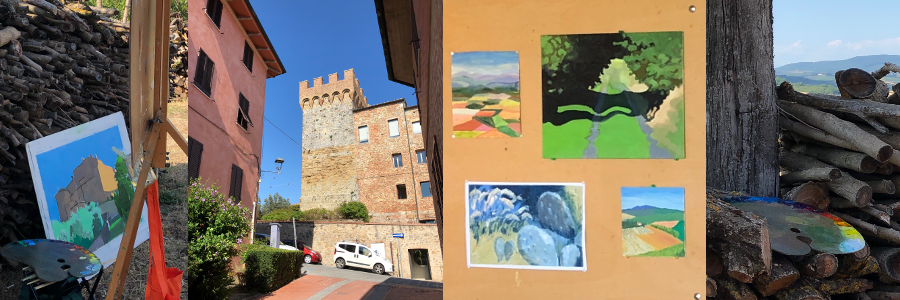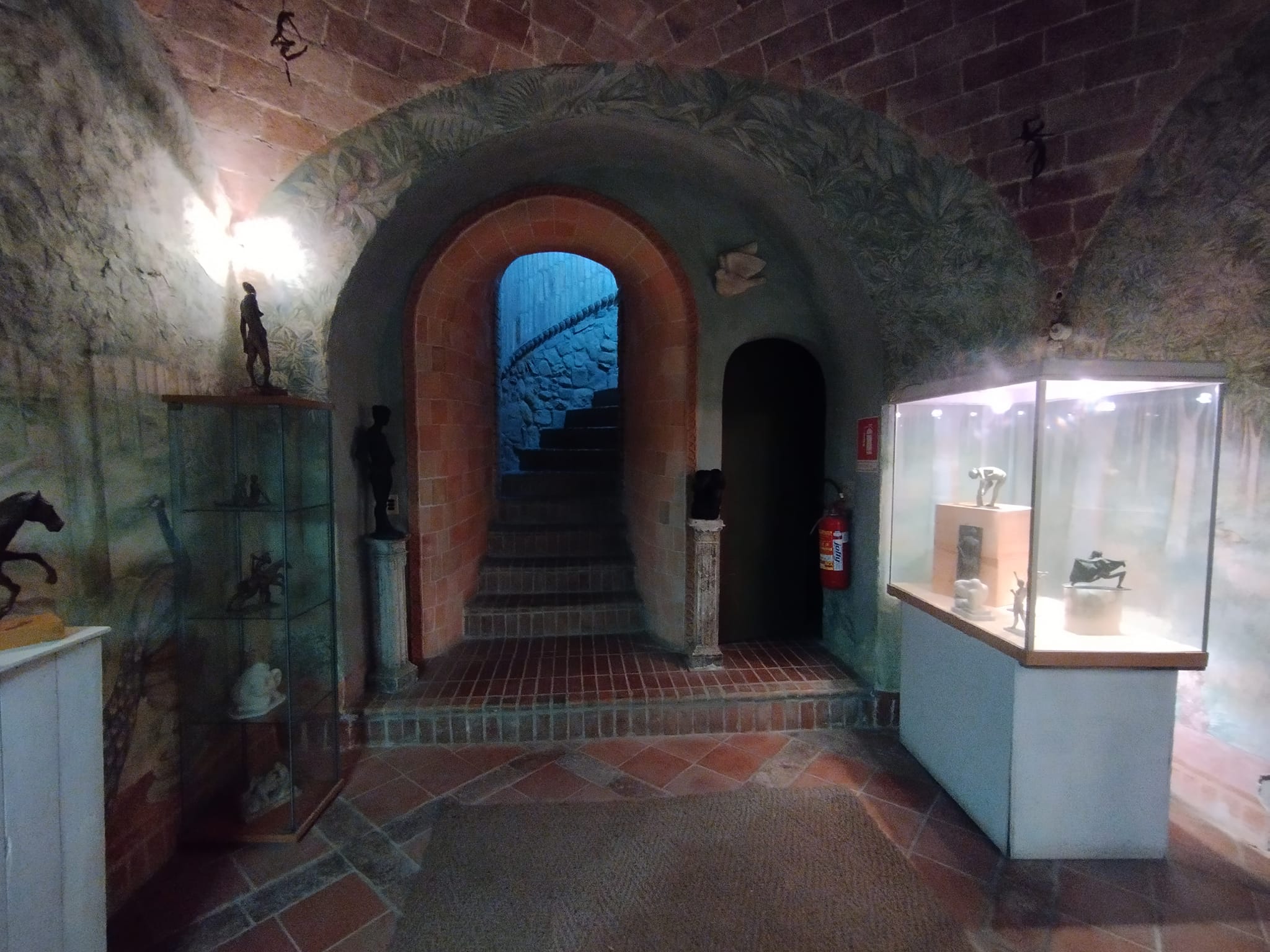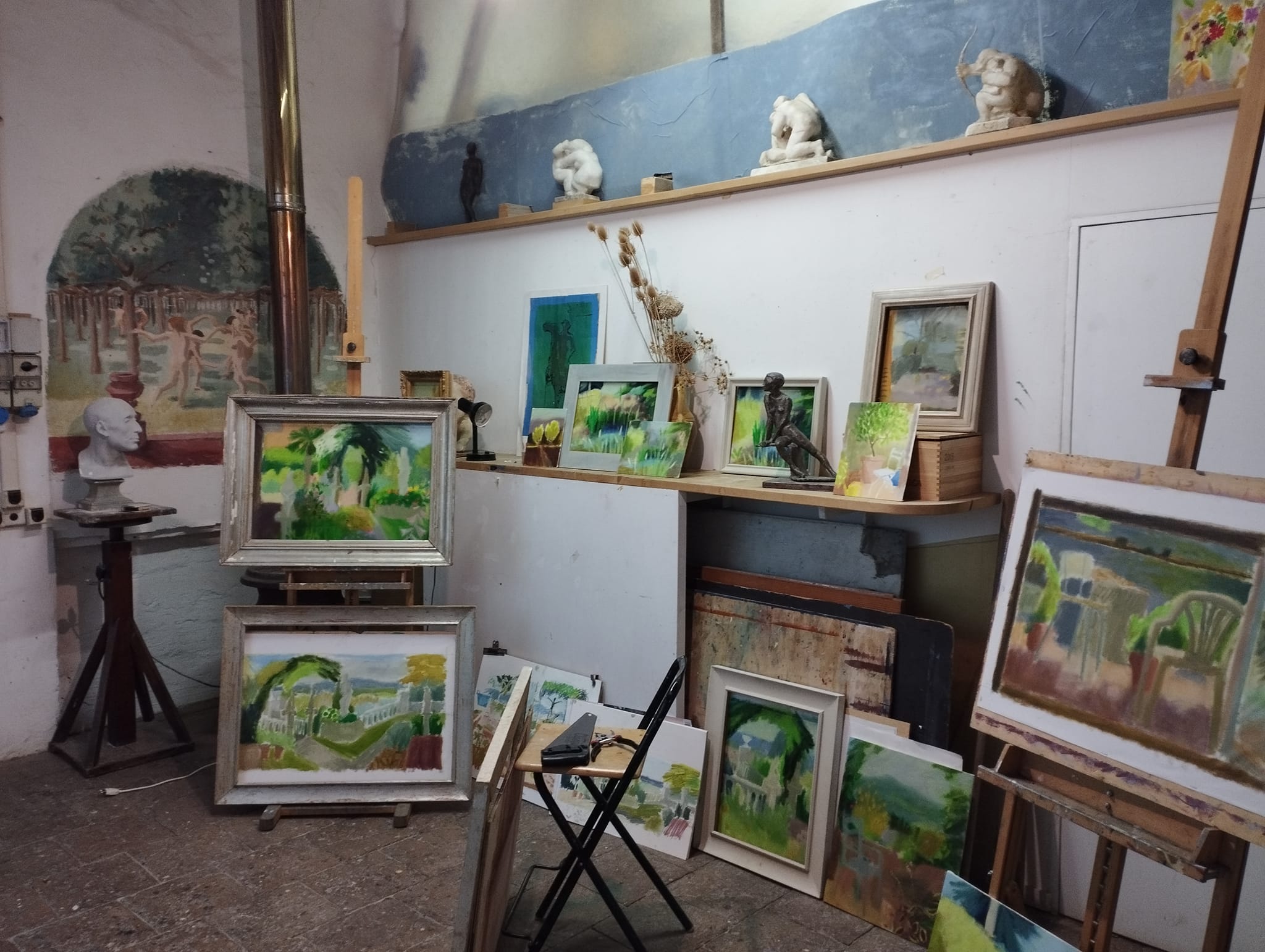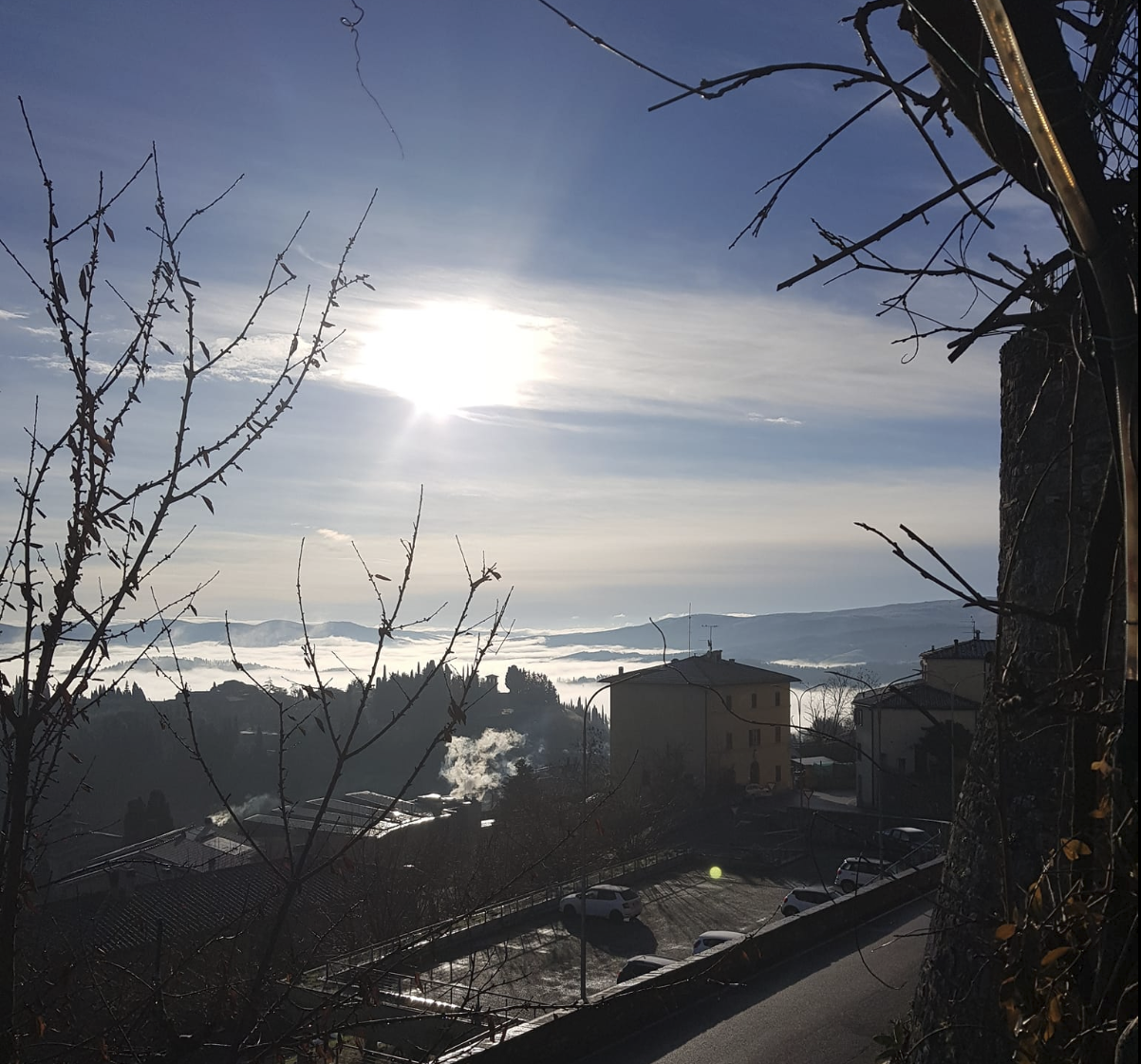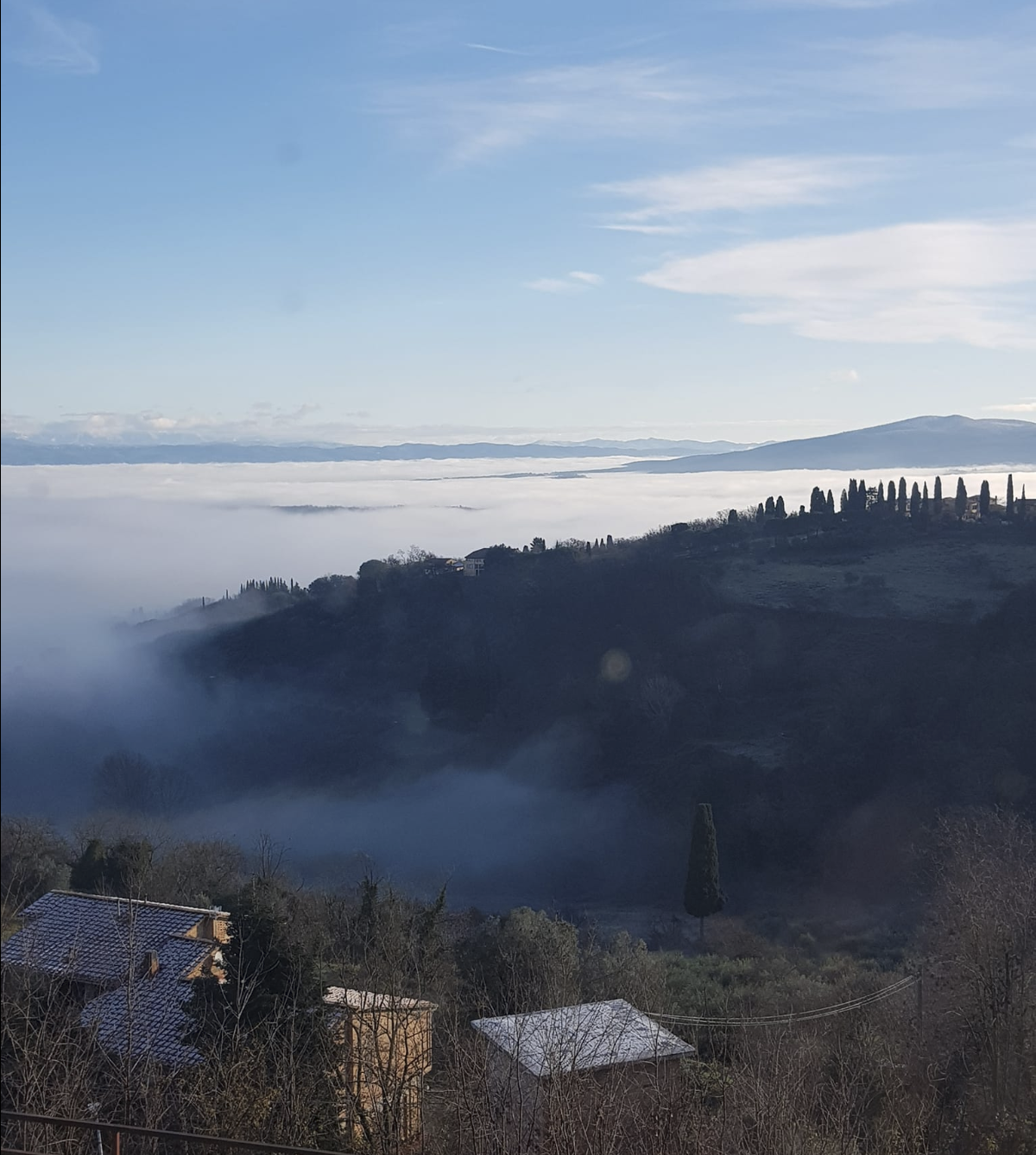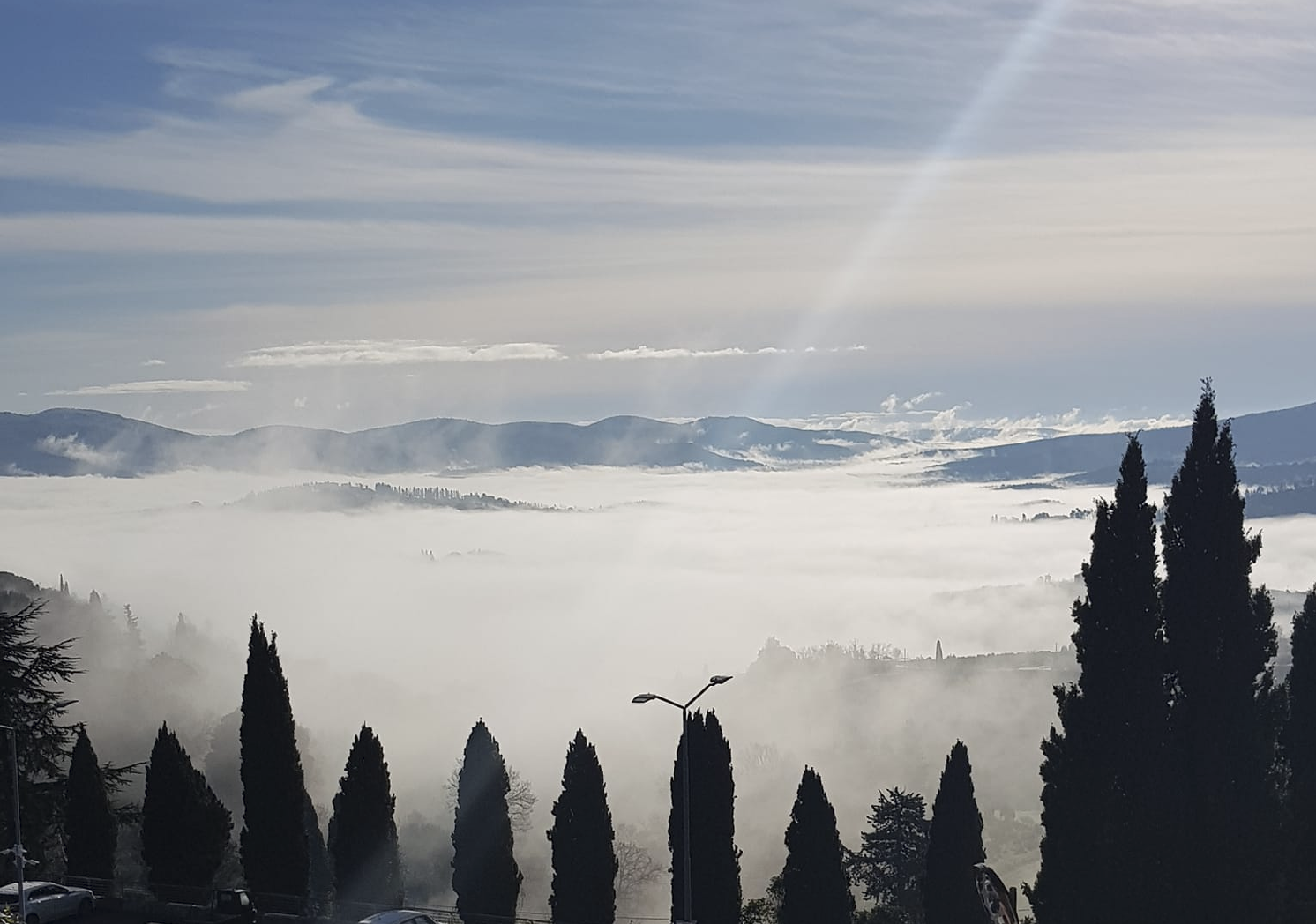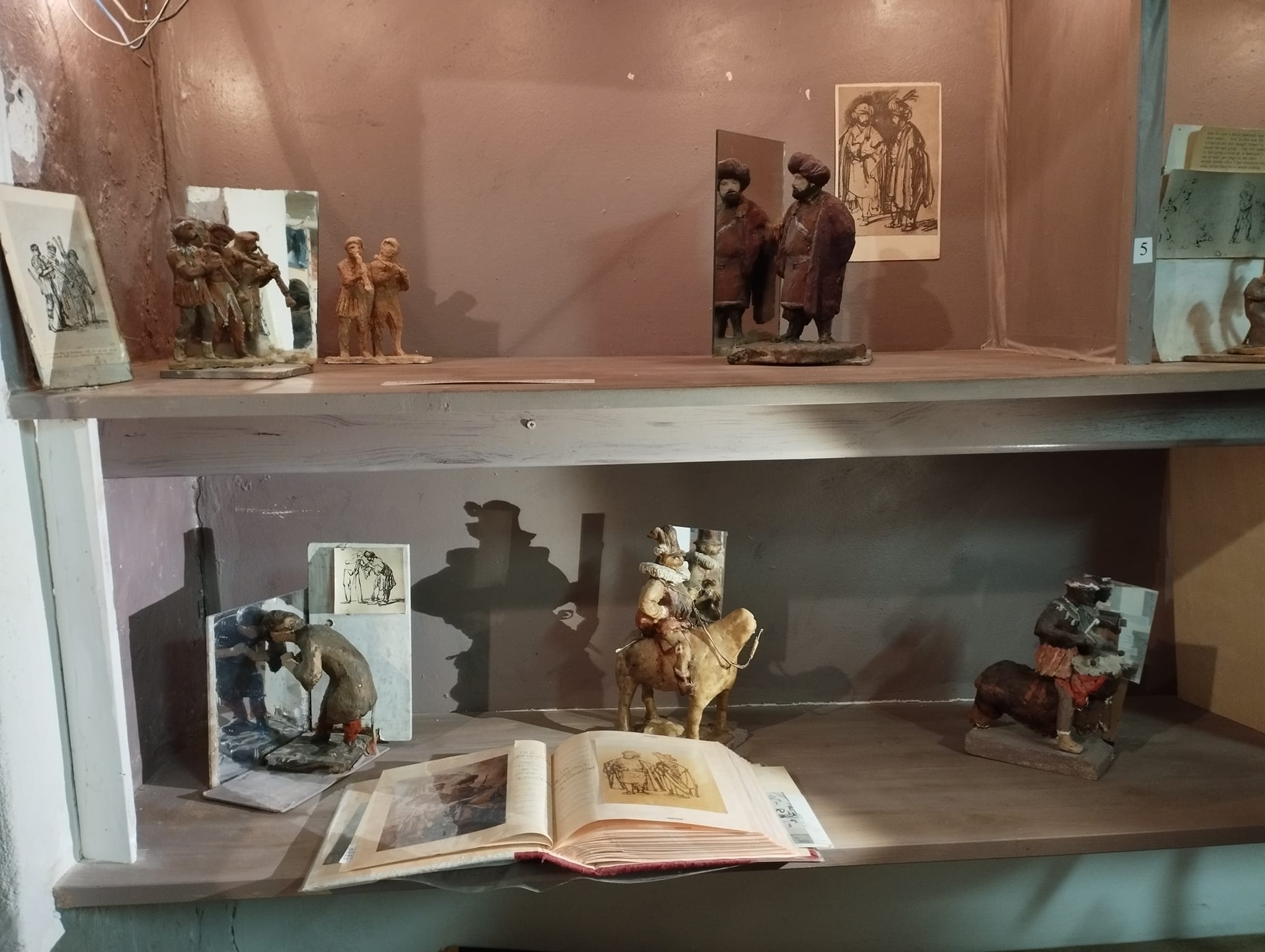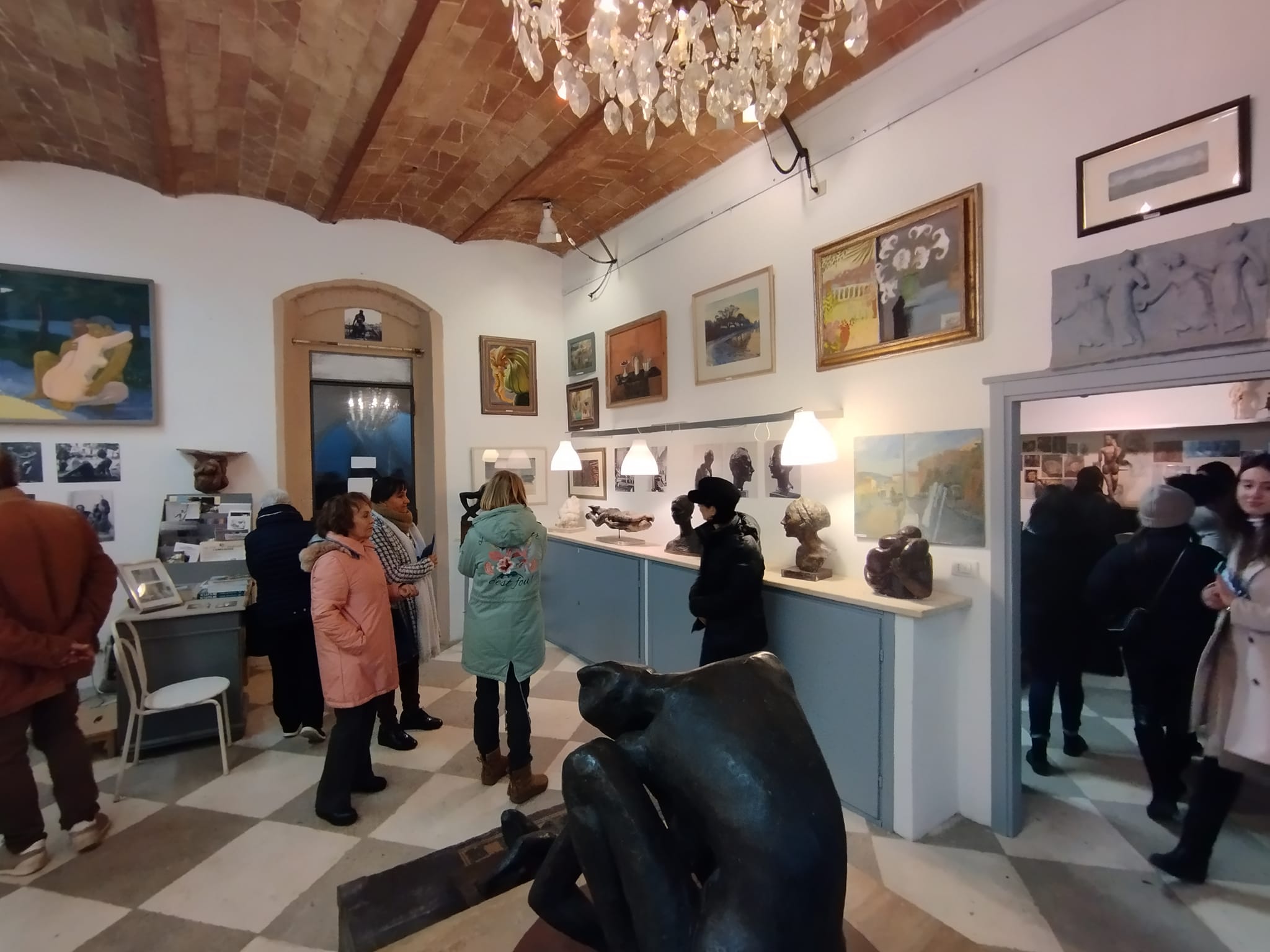Scroll through these images of Casole, with fascinating descriptions by Maurizio Cabibbo, to get a feel for the village where the Art Centre is located, its culture and history. Google Earth links click here Verrocchio Art Centre Tuscany Italy

Casole d'Elsa is a charming medieval hilltop town situated in wonderful countryside around Siena. It is situated 70 km from Florence and 35 km from the town of Siena. Originally it was a domain of the Bishop of Volterra but in the middle of the 13th century it passed under the control of Siena. The Sienese strengthened the fortifications because of its strategical position. In 1554 Casole surrendered, after strenuous resistance, to the imperial and Florentine armies during the war against Siena. The dualism between Siena and Volterra still survives in the daily life of Casole for political purposes it is in the Province of Siena, whereas it falls under the Diocese of Volterra for religious matters. Verrocchio Art School Tuscany Italy
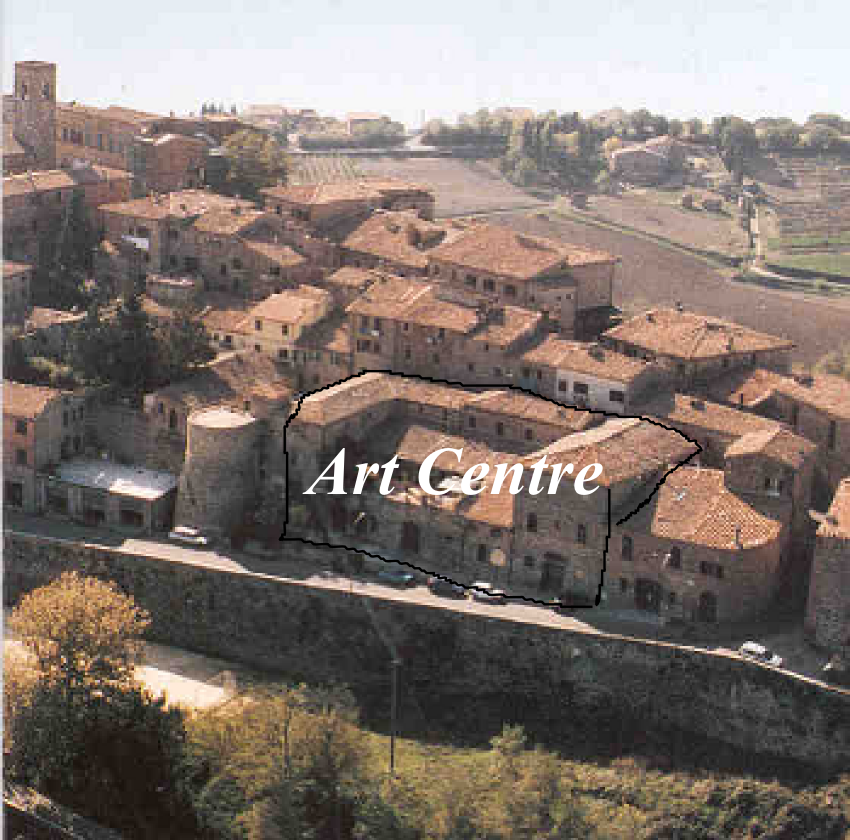
The shape of Casole is roughly an elongated pear; it is about 400 metres long (North-South) and about 130 metres wide (East-West). The medieval walls, mainly visible on the Westside of the town, enclose it. In the middle of the village runs the main street from north to south, dividing it into two nearly symmetrical parts. View in the direction of San Gimignano

At each end of the main street were the Gates of the town; to the north Porta ai Frati, to the south Porta Rivellino. Unfortunately these two Gates are no longer in existence. In some old photographs is possible to see Porta Rivellino before it was destroyed during the Second World War, in an attempt to prevent the advancement of the allied tanks. La Rocca, Casole's town hall often hosts painting and sculpture exhibitions

On the eastside of the village are two well-conserved rounded towers, built in 1481 to strengthen the already existing fortifications. At the south end is the Rocca, an imposing squared castle with a massive stone tower. Over the years this building has been altered innumerable times and nowadays its original aspect is almost invisible. Today the Rocca serves as the Town Hall and is thus the most important civil building in Casole and dominates the second Piazza of Casole - Piazza della Liberta. The main Piazza. The Art Center is located just off the main square

Dominating the main Piazza della Liberta, is Casole's most important religious building, the Collegiate Church of Santa Maria Assunta, which has also been altered many times over the centuries. The Church was consecrated in 1161 and of this original primitive construction there remains the base of the 3 apses in the crypt under the actual level of the pavement. It would seem that the bases and capitals of the pillars, which divided the Church into 3 naves, were removed when the Church was reconstructed and were reused in the splendid Church of San Niccolo not far away. Flanking the Church on the right is the Clergy house, which contains the Cloisters, also much altered. Casole's main street has three bars, a florist, tobacconist, ice-cream parlour, bakery and a bank

Proceeding in a northerly direction, about halfway along the main street, one can see on the right the handsome renaissance palace of the Casolani family where the painter Alessandro Casolani was born in 1552. Almost opposite this building is the Palazzo Pretorio, which displays the Coats of Arms of the various administrative heads who presided there. Medieval Palazzos and ancient buildings

Opposite the Collegiate Church in the Piazza della Liberta is the Palazzo of the Porrina family, a massive brick edifice built in the 1300's and completely altered on the outside. In the side streets, which run parallel to each side of the main street, there are numerous medieval buildings. View in the direction of Monteguidi - stunning landscape ideal for Painting

The countryside surrounding Casole is breathtaking. On a clear day one can see north as far as Apennines on the borders of Tuscany with Emilia Romagna, to the North east the hills of Chianti, to the east the mountains of the Casentino behind Arezzo and the hills of Montagnola, behind which is Siena. Looking south, following the valley of the river Elsa one can see right down to Monte Amiata at the extreme south of Tuscany, and the Metalliferrous hills with their characteristic jets of sulphurous steam.

To the west is majestic Volterra and the luxuriously wooded slopes of Berignone. A very varied interesting and colourful landscape: fields of silver grey olive trees against dark green woods, freshly ploughed red and purple earth contrasting with a clear blue sky, the yellow sunflowers faces against the dark accents of the cypresses.

In May and June the countryside around Casole is rich with wild flowers. Orchids grow luxuriantly by the sides of the roads, while poppies mix with the maturing corn. On June nights the ripening wheat attracts fireflies, which dance over the fields like scintillating diamonds.

In later summer flocks of gorgeous coloured bee-eaters, migratory birds from Africa pass over the village, amongst the ever-present flocks of house martins and swifts and occasionally even a rare peregrine falcon, hobby or short- toed eagle. Another summer attraction on clear nights are the public sky viewing evenings organised by Casole's very own Astronomical Association, where one can enjoy guided tours through the night sky with powerful professional telescopes, taking in the Moon, the planets and various galaxies, star clusters and nebular objects.

On the second Sunday in July, Casole hosts its own Palio, a horse and jockey race, which has nothing to do with the famous Palio of Siena. This race was originally held in May, on the festival of S. Isidoro, the patron Saint of farmers, and the contradas or quarters represented the various tenant farms attached to the main estate. In the '50s and '60s the agricultural crisis and the consequent depopulation of the countryside led to the suspension of the festival for 15 years. It started again in 1976. Casole's Palio would seem to have secular origins, the adoration of St. Isidoro having begun around the 16th century. Today the Palio is no longer celebrated in May on the festival of St. Isidoro. From its beginnings as a spring festival for agricultural workers, the Palio has now become a big summer celebration for all the village of Casole, attracting thousands of Italian and foreign tourists.

It lasts almost a week with evenings of dancing, music, games inspired by peasant farming traditions and the qualifying horse trials. On the Saturday evening before the day of the race itself each contrada organises a huge open air dinner, where amidst the rowdy partying everyone hopes for victory the next day for his own contrada. On the Sunday morning there is an antique market and a brass band parades through the streets, which are decorated with the coloured flags of the various contradas. Mass is celebrated in honour of St. Isidoro. At about 6 pm the horses are brought up to the Church to be blessed; a bit later the village is almost deserted as everyone moves outside the main village down to the hill where the Church of St. Niccolo stands, to watch the race. The presentation of the Palio - the large hard painted banner - to the victorious contrada takes place in front of the Church of St. Niccolo. After the prize giving everyone disperses for dinner and much later in the evening there's a spectacular fireworks display. A fitting end to a wonderful festival.
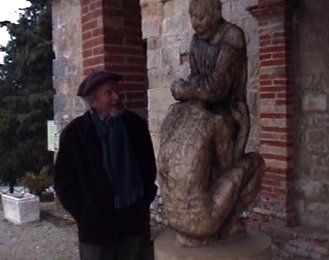
The church of San Niccolo is a charming mainly Romanesque structure, in the portico is Nigel's Return of the Prodigal Son and nearby is his monumental Good Samaritan.

A Day out by the beautiful Merse River. The river is perfect for swimming - waist deep and slow moving. It is edged by wonderful woodland walks.

View of the amphitheatre at the rear of the village. This is a wonderful venue for evening performances during the summer months.

- The Rocca
- Church of Holy Spirit
- Palazzo Pretorio
- Palazzo Casolani
- The Collegiate
- Church of St. Peter
- Church of St. Niccol
Distances from the main cities:
- FIRENZE 70 km
- SIENA 30 km
- S. GIMIGNANO 25 km
- VOLTERRA 25 km
- COLLE VAL D'ELSA 13 km
- POGGIBONSI 25 km




















